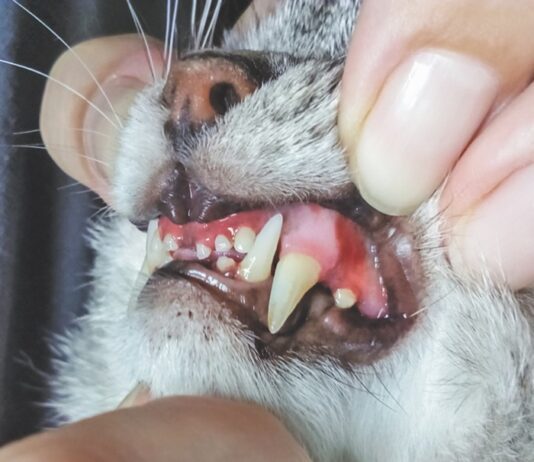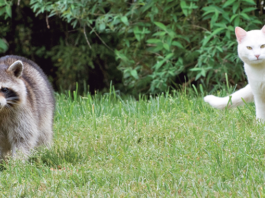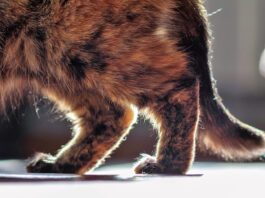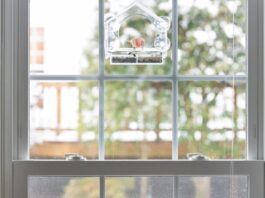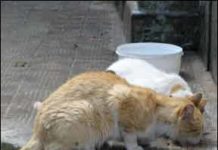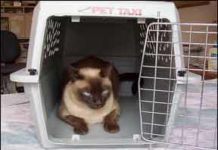Short Takes: January 2012
Chronic gingivostomatitis (FCGS) is a significant disease of cats causing ulcerative, painful lesions in the mouth. Unfortunately, the cause of this condition is not always clear, but feline calicivirus has been speculated to play a part in some cases. Medical treatment of this condition has largely remained unsuccessful. Interferon is a protein produced by animals to fight virus infections, and investigators examined the potential of this substance — which can be produced artificially and given orally — to treat FCGS.
Short Takes: December 2011
Unfortunately, feline lower urinary tract diseases (FLUTDs) are common. Urethral obstruction (UO) is believed to occur more commonly in young cats and almost exclusively in male cats, although veterinary literature has limited information regarding the risk factors for UO. The most common etiology of UO in cats is urethral plugs, and the most common signs of UO include stranguria, dysuria and pain, and varying degrees of systemic signs.
Short Takes: November 2011
Fish and flaxseed oil are excellent sources of n-3 polyunsaturated fatty acids (PUFA), and both have become popular dietary supplements. These fatty acids can modulate the immune response, and have been used to address canine skin conditions. However, the effects in cats have been relatively unknown. This study (“Dietary fish oil and flaxseed oil suppress inflammation and immunity in cats,” Veterinary Immunology and Immunopathology, 2011) investigates the responses in cats to fish or flaxseed oil.
Short Takes: October 2011
Cytauxzoonosis — often a fatal infection in domestic cats — is a disease caused by the parasite Cytauxzoon felis, which is transmitted by the bite of a tick. Most affected cats are young adults with exposure to the outdoors and vague clinical signs of lethargy and anorexia. Treatment for cytauxzoonosis is usually imidocarb diproprionate, but a combination of atovaquone and azithromycin (A&A) has also been utilized as a treatment. (neither form of therapy has been prospectively evaluated for efficacy, however). Eighty acutely ill cats with Cytauxzoon felis infection were treated at various veterinary clinics. Of 53 cats treated with A&A, 32 (60 percent) survived to discharge.
Short Takes: September 2011
Onion, garlic, leek, chives, shallots and scallions are all part of the genus, Allium. Unfortunately, all Allium species can be poisonous to dogs and cats; their toxic components can damage red blood cells (RBC), leading to a hemolytic anemia. Cats in particular are two to three times more susceptible to RBC damage from these components than other species. Onion toxicosis is noted in animals that consume more than 0.5 percent of their body weight (for instance, for a 10 lb cat, this would be 8 ounces).
Short Takes: August 2011
During the second World Conference on Veterinary Education in Lyons, France, an emphasis was placed on animal welfare and the background on the topic that graduating veterinarians need to achieve regardless of their location and training. “Vets can have a direct impact on the attitudes and behaviors of the general public towards animals as advisers to owners as well as to governments and corporations,” explained Ruth De Vere, head of education at the World Society for the Protection of Animals International (WSPA). “After this conference, where the world’s veterinary elite came together globally, I am hopeful that animal welfare will become an integral part of veterinary training.”
Short Takes: July 2011
Thanks to the development of screening assays and vaccines for FeLV, the prevalence of persistently infected cats has decreased. Recent studies indicate that the FeLV genetic material remains in cats exposed to the virus, though viral replication may not occur. Concern exists that this persistent viral DNA may ultimately contribute to development of lymphoma in cats.
Short Takes: June 2011
Based on data in the Veterinary Medical Database (VMDB), 1,129 feline intestinal tumor patients between 1964 and 2004 were evaluated for inclusion in an epidemiologic study. Cases were analyzed by breed, age, year of diagnosis, tumor type and tumor location. (Note: Feline intestinal tumors are relatively uncommon and the incidence of all intestinal tumors for this 40-year time period was 0.4 percent.)
Short Takes: May 2011
Urethral obstruction (UO) is a relatively common medical condition in male cats that usually requires emergency treatment (see related article on page 3 of this issue). Standard treatment - which involves medical stabilization of cardiovascular and metabolic derangements, correction of electrolyte abnormalities with IV fluid administration, and relief of the obstruction by urethral catheterization - may require a number of days in the hospital at considerable expense. The study ("A protocol for managing urethral obstruction in male cats without urethral catheterization," Journal of the American Veterinary Medical Association, 2010) involved a clinical trial involving 15 male cats with UO where standard treatment had been declined by owners due to cost issues.
Short Takes: April 2011
Researchers studied the effect of distance and neighborhood-level demographics on the number of pet adoptions from an animal shelter ("Use of geospatial neighborhood control locations for epidemiological analysis of community-level pet adoption patterns," American Journal of Veterinary Research, 2010). The methods used to perform the study included client segmentation, geospatial tools, and epidemiological techniques that evaluated locations of 1,563 adoptions from an animal shelter in eastern Massachusetts.
Short Takes: March 2011
Cornell University Veterinary Specialists (CUVS) welcomed its first patients in January, 2011. The satellite referral and 24-hour emergency care hospital located at 880 Canal Street in Stamford, CT, leverages the resources of the nations leading veterinary college, Cornell Universitys College of Veterinary Medicine, with those that the best of specialty private practice can offer for the benefit of pets, owners and the veterinary profession.
Short Takes: February 2011
Multiple endocrine glandular failure is recognized in humans, yet it is an uncommonly recognized phenomenon in veterinary medicine. This retrospective study ("Multiple endocrine diseases in cats: 15 cases [1997-2008]," Journal of Feline Medicine & Surgery, 2010) included a population of cats from a university veterinary teaching hospital diagnosed with multiple endocrine disorders.

